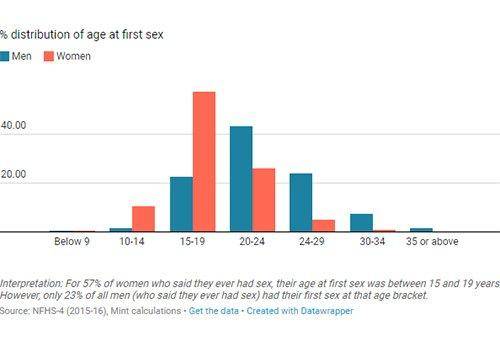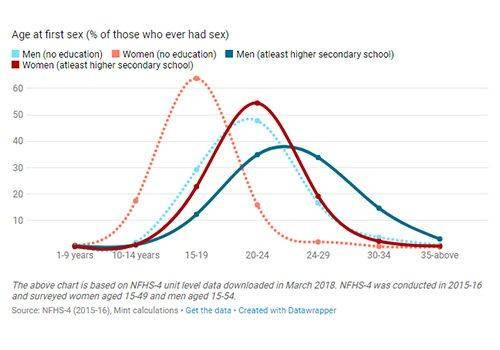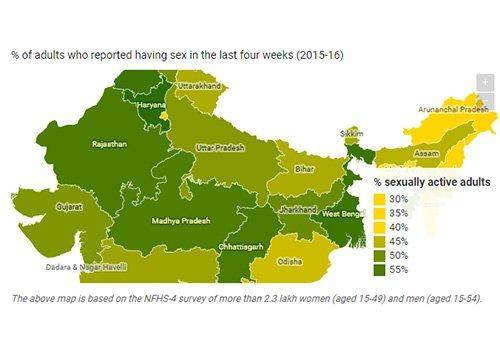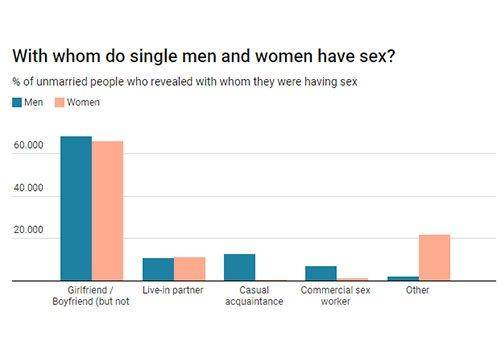Awareness About Sexual Health
The first World Sexual Health Day was celebrated with the slogan “Let’s talk about it!”. World Sexual Health Day is an awareness day committed to promoting best practices in sexual health. Dr Sharmila Majumdar, a senior sexologist and psychoanalyst by profession runs a sexual and mental health clinic at Avis hospital, Hyderabad where she is the chief sexologist and director. She earnestly wants to see our country break the shackles of ignorance and get educated in the field of sexual health. “Good sexual health will promote good family relationships, bringing down divorce rates, infections, infertility and make our young citizens aware and conscious about their sexual health,” said Dr Majumdar.
What young people need to know
Young people need to be aware of ways of maintaining sexual health feels Dr Majumdar. There should be:
Indian data on sexual health
Among Indians who have sex, more than 90% had their first sexual intercourse before reaching the age of 30, according to data from the National Family Health Survey (NFHS), a large-scale nationally representative survey conducted in 2015-16. The difference between the genders is primarily on account of the difference in the ages at which they tend to get married. Most sexual encounters in India tend to be of the conjugal kind, the data suggests. Thus, women tend to have sex at an earlier age because they get married at a younger age.
Education delays sex
The data suggests that pre-marital sex is still taboo across large swathes of the country. Only about 11% of single men and 2% of single women in the 15-24 age group reported having had sex. The proportion of single men (15-24 age-group) reporting pre-marital sex was relatively higher in Chhattisgarh (21.1%), Punjab (21%), Madhya Pradesh (20.7%) among the major states. The NFHS data on sexual relations is based on a sample of more than 100,000 men and women each. The data shows that north Indians report a more active sex life compared to those in the South. North Indians reported a more active sex life compared to those in the South. Nationally, 47% of men and 48% of women reported having sex over the past four weeks. One caveat worth keeping in mind is that the figures are based entirely on self-reported data and it is difficult to gauge the extent of false reporting. The proportion of single people who reported an active sex life is lower compared to the overall average: 3% of single men (across all age groups) reported having sex in the four weeks prior to the survey. Among single women, the figure is even lower at less than 1%. The proportion of sexually active single males is relatively higher (above 5%) in states such as Punjab, Haryana, Chhattisgarh, and Madhya Pradesh. The proportion of sexually active single females is relatively higher in Karnataka (2%) and Gujarat (1.9%). Singles include never-married persons as well as those who were married but are not married now. The rates vary across states, but there is a close correlation across states between the proportion of never-married males and the proportion of never-married females who reported having had sex.
Sex among single people
Of those singles who reported having sex, a majority had sex with their boyfriends or girlfriends (who do not share the same accommodation). Roughly a tenth of them reported having sex with their live-in partners. With whom do single men and women have sex? Twelve percent of single men who have had sex reported having sex with casual acquaintances while 6% of such men reported using the services of a commercial sex worker. The corresponding figures for single women are extremely low. This data has been gathered by the National Health Family Survey.




